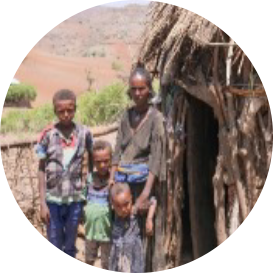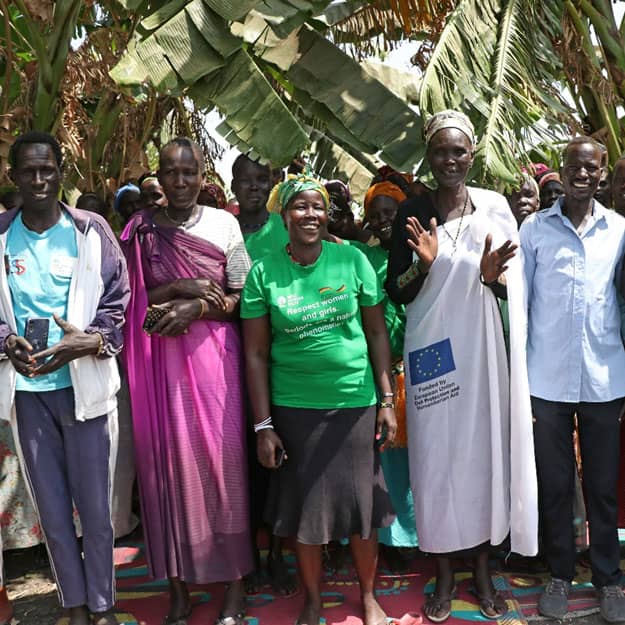Nitya Rao, University of East Anglia,
Siera Vercillo, Wageningen University
Gertrude Dzifa Torvikey, University of Ghana
October 2024
Gender inequality, food insecurity, and climate change converge to place households, communities, and countries under extreme stress. Women and girls are typically hardest hit by food insecurity and malnutrition. They also suffer disproportionately from the effects of weather extremes and climate emergencies.
-
Among the undernourished, women consistently remain the most food insecure. The gap in food security between men and women is as high as 19 percentage points in some countries, and the situation for women is especially severe in countries affected by conflict. Women who are poor, rural, migrants, refugees, or engaged in informal employment are even more vulnerable.
Gender Inequality in Food Systems and Nutrition Is Severe—and Climate Change Is Making It Worse
-
Food systems more broadly also discriminate against women. Agrifood policy approaches and finance policies often fail to respond to the underlying power relations between men and women, such as discriminatory norms, labor burdens, and land inheritance regimes, yet they rely on women’s unpaid farm labor and caregiving to sustain an unjust food system.

It is difficult to provide for my family because the productivity of my piece of land is very low due to the effects of climate change. I use half of my land to harvest, and it is not enough for feeding my family...
-
At the same time, climate change has disproportionate impacts on women. To cope with the impacts of climate change, women often face increasing work burdens, including the need to travel farther to fetch water. They are forced to take on multiple livelihoods, worsening their time poverty, with implications for food and nutrition security.
Women-headed households are projected to lose 34% more income if global temperatures rise by another one degree Celsius.
BOX 2.1
HOW GENDER INTERSECTS WITH OTHER IDENTITIES AND EXPERIENCES
Gender refers to the socially determined characteristics of women and men, which are learned, are changeable over time, and vary both within cultures and from culture to culture. While gender relations signify the social relations of power and the roles, responsibilities, opportunities, and expectations facing women and men, these categories are not homogeneous. Rather, the experience of gender is rooted in intersectionality, reflecting the multiple overlapping sources of identity and oppression, whether race, ethnicity, caste, or sexual identity.
Food security is not just about vitamins, minerals, and dietary diversity but is part of a wider system that can affect women in varied ways depending on their stage of life and social position. As conditions intersect and overlap, they can combine to create cumulative burdens. The women worst affected by food insecurity and nutritional deficiencies are likely to be poor, rural women with little education (HLPE 2023), Indigenous women (Lemke and Delormier 2017), the urban poor (Roy et al. 2023), and the elderly (Assoumou et al. 2023). These intersecting drivers, however, are not systematically documented or considered in policy (Lemke and Delormier 2017; Rao 2020).
Gender Justice Is a Cornerstone to Achieving Climate Resilience and Food and Nutrition Security
Gender justice—that is, equity between people in all spheres of life—is critical to a just world and to achieving climate and food justice. It consists of three interconnected dimensions: recognition, redistribution, and representation.

-
Recognitional justice entails transforming gender discriminatory norms in order to change how households, communities, and the wider culture view gender roles and capacities. It means acknowledging that different groups of people have different needs, vulnerabilities, and opportunities and that their physical location and social position can intersect to intensify injustices.
-
Redistributional justice involves directing resources and opportunities to redress gender inequalities. Ensuring women’s access to and control over critical productive resources can challenge inequitable power dynamics and create an enabling environment for food and nutrition security.
-
Representation refers to closing the gender gap in women’s participation in politics and decision-making at multiple levels. Legal changes and women’s political participation and leadership may help push policies toward gender equity, though such outcomes are not assured and can take time.

Women now bring food to the table. Men in the family and in the community respect them more. With less stress for food and money, there is also less fighting and physical violence at home.
Reforms are needed to incorporate gender justice at all scales and levels, ranging from individuals to entire systems and from formal mechanisms to informal social and cultural norms. While enabling access to resources for women is essential, structural inequalities—including class dynamics, rising income inequality, corporate control over production systems, and lack of high-quality basic services—must be addressed for real systemic and social change to happen.
FIGURE 2.2
SCALES AND LEVELS OF CHANGE TO ACHIEVE GENDER JUSTICE FOR CLIMATE RESILIENCE AND FOOD SECURITY
Redistribution
-
Equal entitlements to productive resources (such as credit and finance, seeds, water, land and common property, and extension services)
-
Equal opportunities for education and employment
-
Equal distribution of social protection
Representation
-
Representation in decision-making fora including parliaments, local governments, and sectoral bodies
-
Strengthened legal entitlements and policies (such as around land and labor rights)
Recognition
-
Increased agency and empowerment in relation to resource control and decision-making
-
Raised women’s and men’s consciousness around equitable food production and provisioning
Recognition
-
Recognition of women as farmers, entrepreneurs, and workers
-
Reduced drudgery of women’s work through public investments in care, education, and health
-
Elimination of discriminatory cultural norms around food, farming, environment, and markets
Without critical feminist, gender-justice approaches to climate resilience and food security that address intersecting social factors, there is a risk that even those policies and interventions that include or target women with resources to help develop their livelihoods or ways to feed their families can deepen their work burdens or result in a backlash—sometimes violent—to any profits generated.
Note: The views expressed in this chapter are those of the authors. They do not necessarily reflect the views of Welthungerhilfe (WHH), Concern Worldwide, or the Institute for International Law of Peace and Armed Conflict (IFHV).